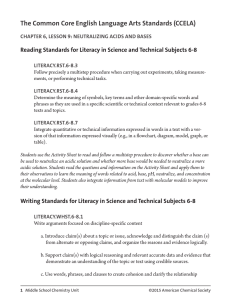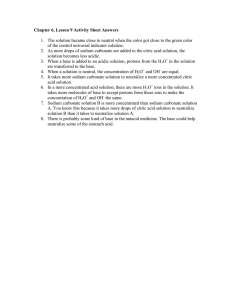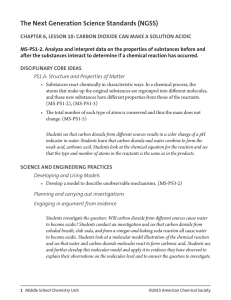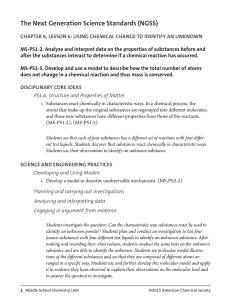The Next Generation Science Standards (NGSS)
advertisement
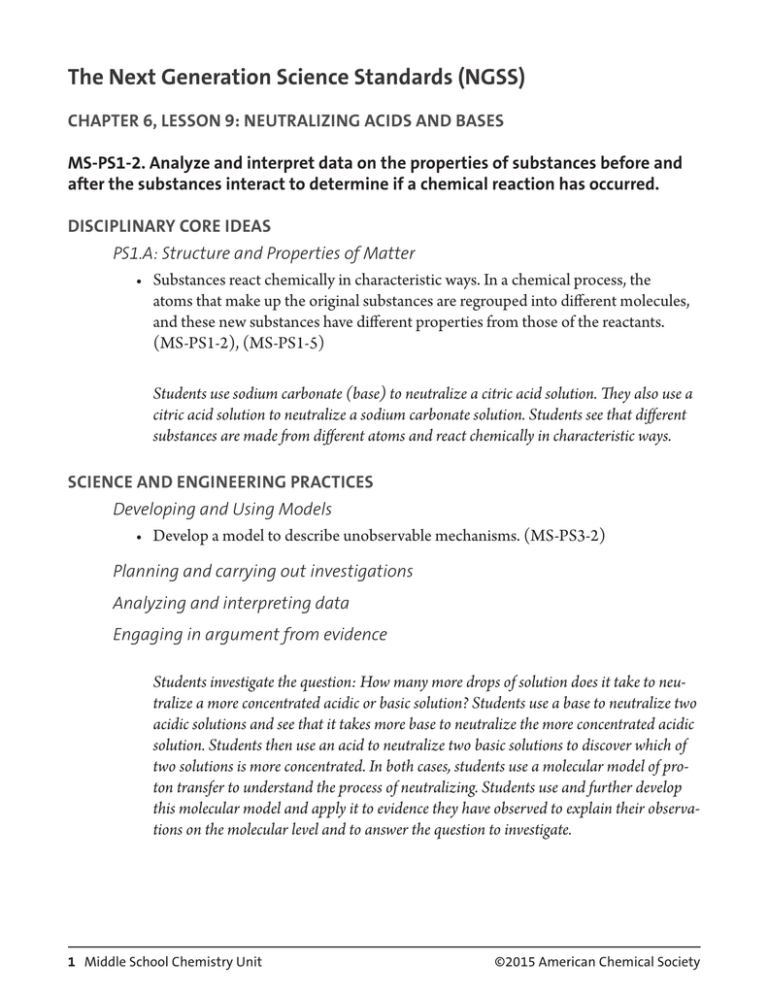
The Next Generation Science Standards (NGSS) CHAPTER 6, LESSON 9: NEUTRALIZING ACIDS AND BASES MS-PS1-2. Analyze and interpret data on the properties of substances before and after the substances interact to determine if a chemical reaction has occurred. DISCIPLINARY CORE IDEAS PS1.A: Structure and Properties of Matter • Substances react chemically in characteristic ways. In a chemical process, the atoms that make up the original substances are regrouped into different molecules, and these new substances have different properties from those of the reactants. (MS-PS1-2), (MS-PS1-5) Students use sodium carbonate (base) to neutralize a citric acid solution. They also use a citric acid solution to neutralize a sodium carbonate solution. Students see that different substances are made from different atoms and react chemically in characteristic ways. SCIENCE AND ENGINEERING PRACTICES Developing and Using Models • Develop a model to describe unobservable mechanisms. (MS-PS3-2) Planning and carrying out investigations Analyzing and interpreting data Engaging in argument from evidence Students investigate the question: How many more drops of solution does it take to neutralize a more concentrated acidic or basic solution? Students use a base to neutralize two acidic solutions and see that it takes more base to neutralize the more concentrated acidic solution. Students then use an acid to neutralize two basic solutions to discover which of two solutions is more concentrated. In both cases, students use a molecular model of proton transfer to understand the process of neutralizing. Students use and further develop this molecular model and apply it to evidence they have observed to explain their observations on the molecular level and to answer the question to investigate. 1 Middle School Chemistry Unit ©2015 American Chemical Society CROSSCUTTING CONCEPTS Cause and Effect • Cause and effect relationships may be used to predict phenomena in natural or designed systems. (MS-PS1-4) Scale, Proportion, and Quantity • Time, space, and energy phenomena can be observed at various scales using models to study systems that are too large or too small. (MS-PS1-1) Students use molecular model animations of water, indicator, acid, and base to explain how these substances interact to cause the observable phenomena of an acid neutralizing a base, and a base neutralizing an acid. 2 Middle School Chemistry Unit ©2015 American Chemical Society

